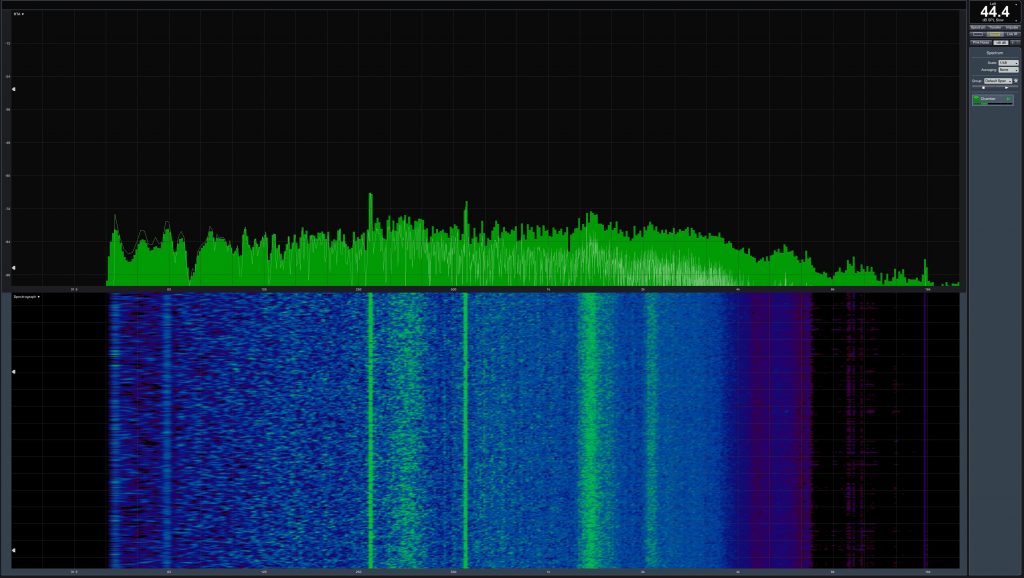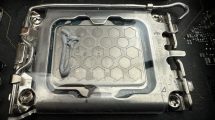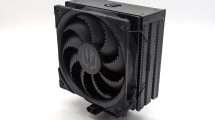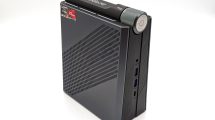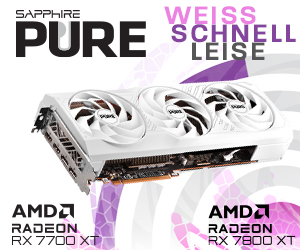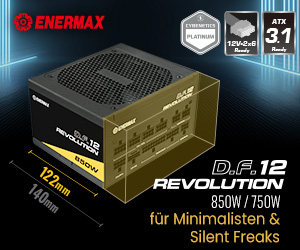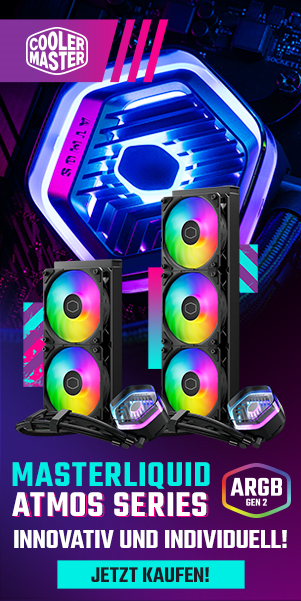There is a fan stop, the hysteresis is well solved and the fans only turn when you really need them. If it is still approx. 2050 rpm in the open construction, it rises up to approx. 2200 rpm (max. 2012 rpm in the closed construction), depending on case and airflow. This is an acceptable value, but not perfect enough for really quiet systems. And this is exactly where the idea with the optional BIOS comes into play, which can lower the fan speed by about 200 rpm without the card really starting to glow. It’s a compromise between clock speed, temperatures and noise.
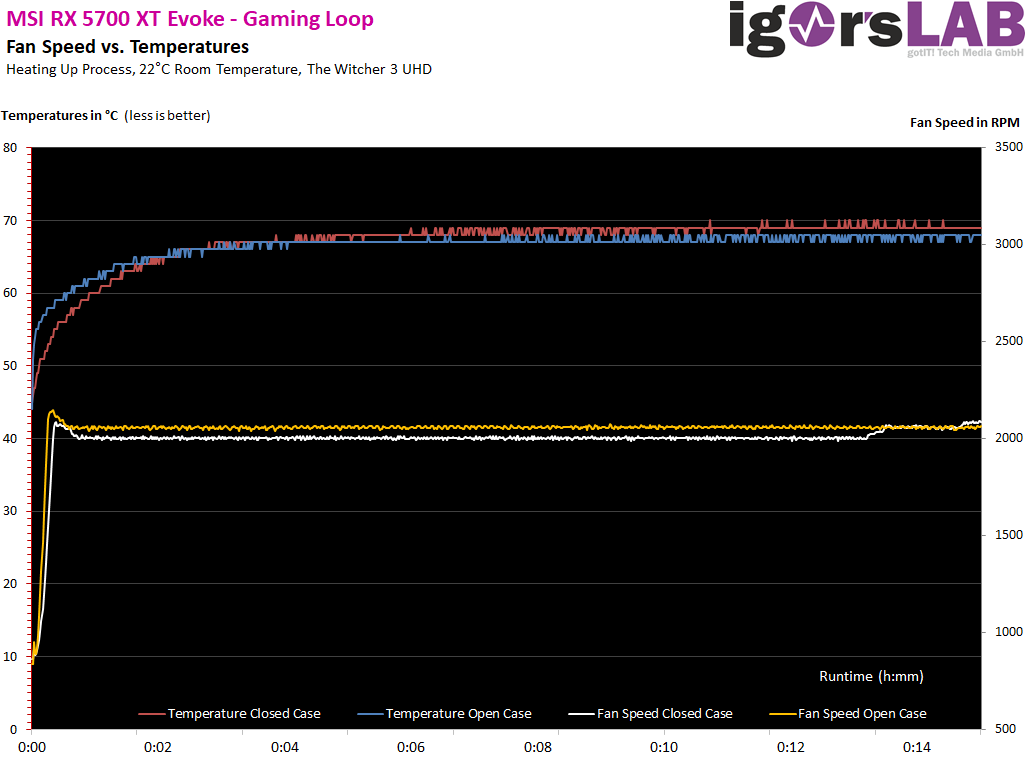
By the way, it doesn’t look any different in the stress test.
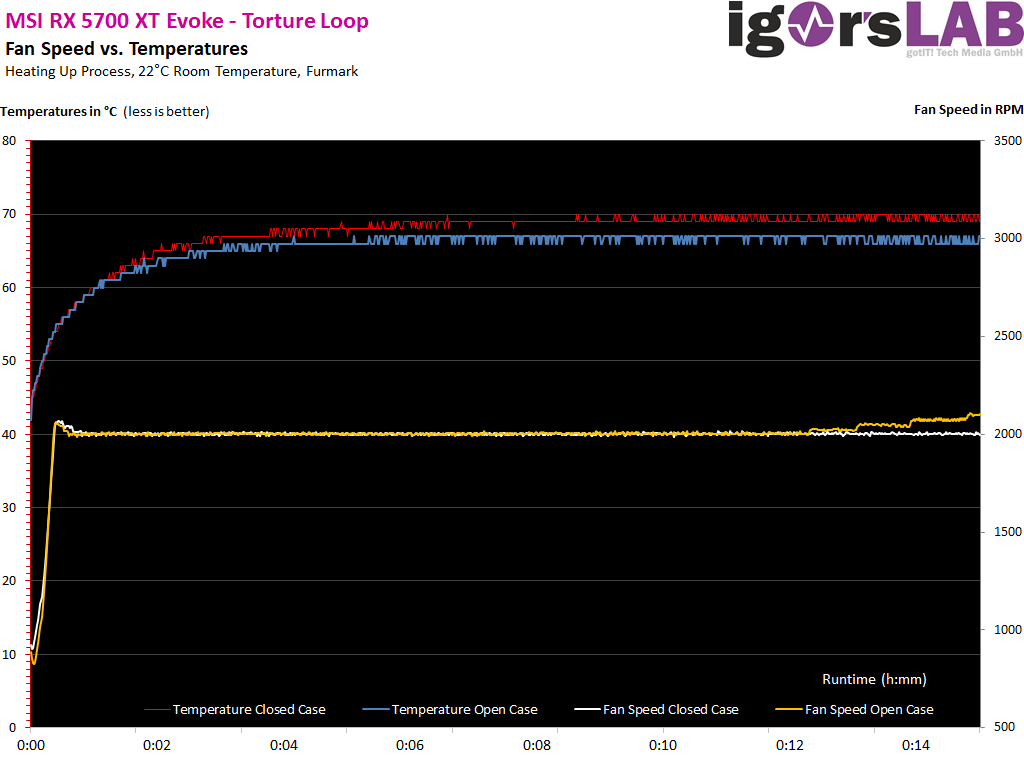
Let us look at the measured values once again in direct comparison to the reference card as a tabular list:
| MSI RX 5700 XT Evoke |
AMD RX 5700 XT Ref. |
|
|---|---|---|
| Fan Speed Open Benchtable Maximum | 2071 rpm (Gaming, Peak) | 2112 rpm (Gaming, Peak) |
| Fan Speed Open Benchtable Average | 2054 rpm (heated on) | 2106 rpm (heated on) |
| Fan Speed Closed Case Maximum | 2212 rpm (Gaming, Peak) | 2121 rpm (Gaming, Peak) |
| Fan Speed Closed Case Average | 2198 rpm (aufgewärmt) | 2118 (heated on) |
| Noise Level Average | 44.4 dB(A) Average Closed Case, 44.9 dB(A) Peak 41.8 dB(A) Average Closed Case (optional BIOS) |
50.5 dB(A), Closed Case |
| Noise Level Idle | Fan Stopp | 31.9 dB(A) |
| Sound Characteristics | swishing, slightly oscillating, hardly any low-frequency parts | noisy, a lot of low frequency components |
| Coil Whining |
low, only with very high FPS numbers and load changes | hearable, with very high FPS numbers and load changes |
Noise emission and spectogram
The measured 44.4 dB(A) are based on the measured approx. 2200 rpm in the closed housing. I applied the same gaming load to the open structure in the measurement room, but fixed the fans at approx. 2200 rpm in order to be able to adjust this value as accurately as possible. The result is shown in the spectogram. With the 200 rpm less from the optional BIOS the card is running quieter at 41.8 dB(A) and only 2 to 3 degrees hotter. Decide by yourself and set your own priorities.
The sound backdrop is audibly present and one can also perceive and measure low-frequency motor noises in addition to fan noise (see peaks on the spectral analysis above). The noise comes from the turbulence of the rotor blades and is defined by a slightly oscillating noise and buzzing of the two fans. However, the chirping of the coils is loosely drowned out.
- 1 - Introduction, Technical Data, Test Setup
- 2 - Tear Down: PCB and Cooler
- 3 - Benchmarks 1920 x 1080 Pixels
- 4 - Benchmarks 2560 x 1440 Pixels
- 5 - Benchmarks 3840 x 2160 Pixels
- 6 - Power Consumption in Detail
- 7 - Temperatures, Clock Rate, Infrared
- 8 - Cooling Fans, Noise Emission
- 9 - Conclusion and Bottom Line















